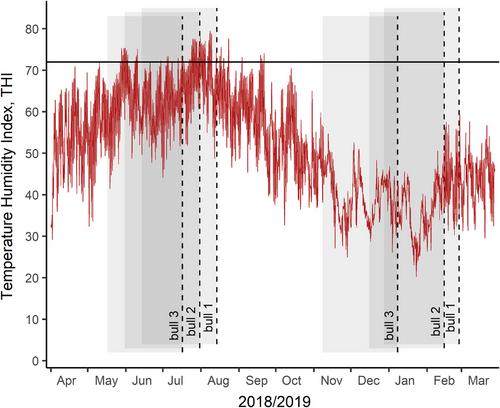Summer heat during spermatogenesis reduces in vitro blastocyst rates and affects sperm quality of next generation bulls
Abstract
Background
Due to global warming seasonal heat stress is an increasing problem in temperate zones. Heat stress not only decreases fertility in females, but can also be detrimental to male fertility.
Objectives
We studied the effects of natural summer heat stress during spermatogenesis in Holstein bulls on semen quality parameters and on fertilization performance in vitro and possible intergenerational transmission of effects on the next male generation.
Materials and Methods
Semen samples from young Holstein breeding bulls, referred to as F0 founders during this study, were collected during summer (F0 “summer” semen) and the following winter (F0 “winter” semen). Parameters such as ejaculate volume, sperm density, motility, thermoresistance, and in vitro blastocyst rates from these F0 semen samples were determined. In addition, after generation of offspring by artificial insemination, semen samples from F1 male offspring were collected and tested for the same quality and performance parameters to capture intergenerational effects. F1 bulls were raised together under identical conditions and semen was collected at about 1 year after birth.
Results
The data showed that in vitro blastocyst rates of F0 “summer” semen samples were lower compared with “winter” semen, whereas blastocyst rates of F1 semen samples did not show significant differences. However, whereas F0 semen samples did not indicate significantly different quality parameters we found that motility of F1 semen samples showed significant differences with higher values when collected from bulls generated with F0 “winter” semen.
Discussion and Conclusion
From our data, we conclude that (i) natural summer heat stress during spermatogenesis can affect in vitro fertility parameters and (ii) the observed effects on sperm motility of F1 semen samples suggest intergenerational paternal transmission.


 求助内容:
求助内容: 应助结果提醒方式:
应助结果提醒方式:


